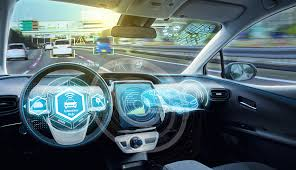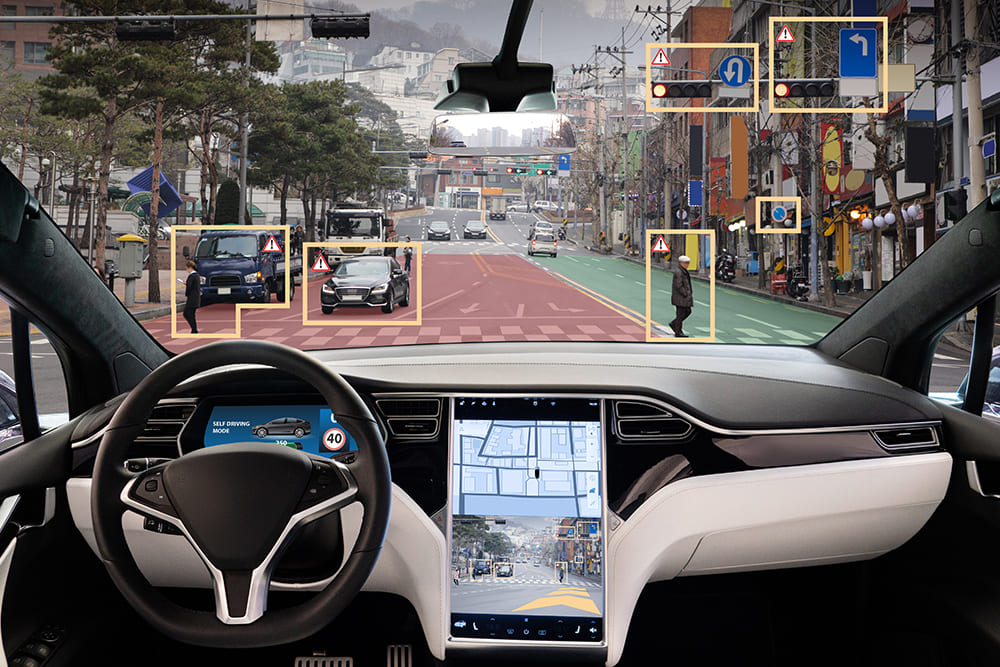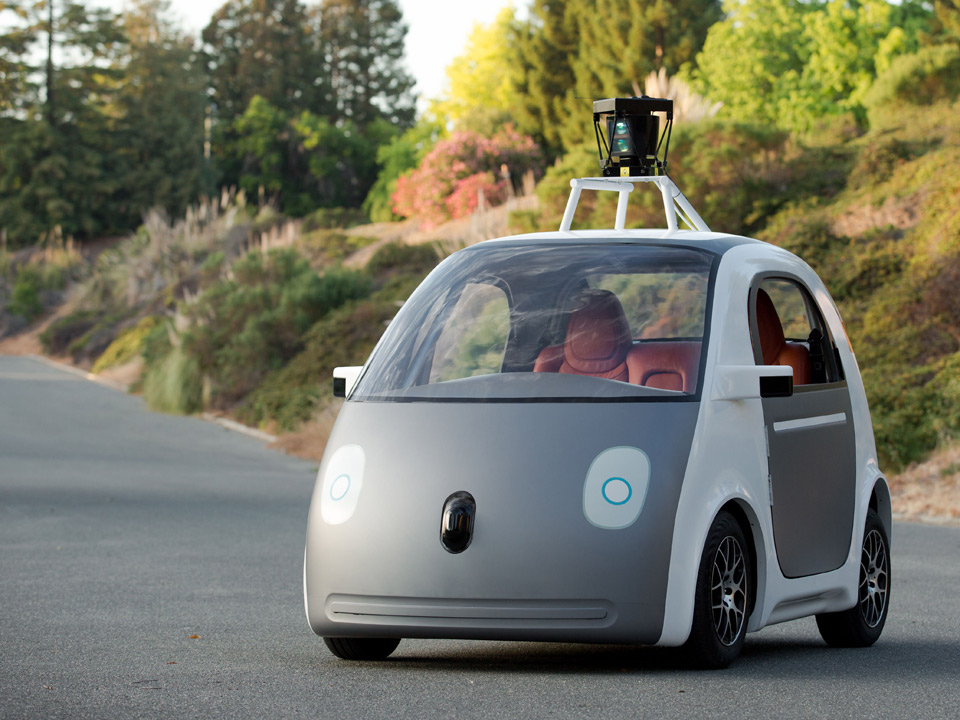Fasten your seatbelts and get ready to dive into the fascinating world of self-driving cars. Imagine cruising down the highway with your hands off the wheel, letting cutting-edge technology take the lead. Self-driving cars have been a dream for decades, and now, they are becoming a reality right before our eyes. Join us on this journey as we explore the groundbreaking technology behind autonomous vehicles in this in-depth look at how they work and what it means for the future of transportation.

The History of Self-Driving Technology
Self-driving cars may seem like a recent innovation, but the concept dates back further than you might think. The idea of autonomous vehicles can be traced back to the early 1920s when Francis Houdina first unveiled his radio-controlled driverless car. Fast forward to the 1980s, and we see the emergence of projects like ALV (Autonomous Land Vehicle) funded by DARPA.
In the late 2000s, companies like Google started making significant strides in self-driving technology with their famous fleet of autonomous vehicles. These developments paved the way for other tech giants and automotive companies to join the race towards fully autonomous driving systems.
Today, self-driving technology continues to evolve rapidly, with advancements in artificial intelligence, machine learning algorithms, and sensor technologies driving innovation in this field. As we look towards a future where self-driving cars are commonplace on our roads, it’s fascinating to reflect on how far we’ve come from those early experiments with driverless vehicles.
How Do Self-Driving Cars Work?
Self-driving cars operate using a combination of advanced technologies like sensors, cameras, radar, and artificial intelligence. These vehicles rely on intricate systems to perceive their surroundings and make real-time decisions while navigating roads.
Vehicle sensors play a crucial role in detecting objects, pedestrians, and other vehicles nearby. Cameras capture visual data that is processed by the autonomous driving software to identify lane markings, traffic lights, and signs.
Radar systems help in measuring distances between the car and its surroundings by emitting radio waves. This information is then used to create a detailed map of the environment for navigation purposes.
Artificial intelligence algorithms analyze data from sensors to interpret complex situations on the road swiftly. The self-driving software processes this information to steer the vehicle safely through traffic conditions autonomously.
Benefits and Challenges of Self-Driving Cars
Self-driving cars present a myriad of benefits that have the potential to revolutionize transportation as we know it. One key advantage is the promise of increased road safety, as autonomous vehicles can react faster and more accurately than human drivers in many situations. This could significantly reduce accidents caused by human error.
Moreover, self-driving cars have the potential to improve traffic flow and reduce congestion on roads, leading to shorter commute times for everyone. Additionally, autonomous vehicles could provide greater mobility options for individuals who are unable to drive themselves due to age or disabilities.

However, despite these promising benefits, there are also challenges that come with adopting self-driving technology. Concerns around data privacy and cybersecurity need to be addressed to ensure that sensitive information collected by autonomous vehicles is protected from unauthorized access. Additionally, ethical dilemmas related to decision-making algorithms in emergency situations remain a contentious issue within the industry.
As we continue on the path towards widespread adoption of self-driving cars, it is important to carefully consider both the benefits they offer and the challenges they bring forth.
Current State of Self-Driving Car Development
Self-driving cars have been a hot topic in the tech world for years, with major players like Tesla, Google’s Waymo, and traditional automakers all vying to lead the way. The current state of self-driving car development is marked by significant progress but also notable challenges.
Companies are investing heavily in research and testing to perfect autonomous driving technology. From advanced vehicle sensors to intricate AI algorithms, the race towards fully autonomous vehicles is more intense than ever before.
Despite advancements, there have been setbacks such as accidents involving self-driving cars raising questions about safety and reliability. Regulatory hurdles also pose a challenge as governments work to establish guidelines for autonomous vehicles on public roads.
The future of self-driving cars holds immense potential to revolutionize transportation, making it safer and more efficient. With further innovation and collaboration between industry stakeholders and policymakers, we can expect exciting developments in the realm of autonomous driving technologies.
Ethical Considerations and Regulations
As self-driving cars become more prevalent on roads, ethical considerations and regulations play a crucial role in shaping their impact on society. One of the key dilemmas is how these vehicles make split-second decisions in potentially life-threatening situations. Should they prioritize the safety of passengers, pedestrians, or both?
Regulations around autonomous vehicles vary worldwide, with some countries embracing them wholeheartedly while others proceed cautiously. Issues like data privacy, cybersecurity, and liability in case of accidents need to be addressed comprehensively.

Ensuring that self-driving cars adhere to strict ethical guidelines and are compliant with existing laws is essential for their widespread acceptance. As technology continues to advance rapidly, policymakers must keep pace by creating adaptive regulations that balance innovation with public safety.
Impact on Society and the Future of Transportation
The impact of self-driving cars on society and the future of transportation is profound. Imagine a world where commuting becomes more efficient, safer, and environmentally friendly. Self-driving technology has the potential to revolutionize how we move from point A to point B.
With autonomous vehicles, traffic congestion could be reduced as cars communicate with each other to optimize routes and minimize delays. This could lead to less time spent in traffic jams and more time for productivity or relaxation during commutes.
In terms of safety, self-driving cars have the potential to significantly decrease accidents caused by human error. By eliminating distracted driving, drunk driving, and speeding, autonomous vehicles can make our roads much safer for everyone.
Furthermore, the integration of self-driving technology could also lead to changes in urban planning and infrastructure development. With fewer parking lots needed in city centers due to shared autonomous vehicles constantly on the move, we might see a shift towards more green spaces or pedestrian-friendly areas.
Self-driving cars have the power to transform not only how we get around but also our cities’ landscapes and lifestyle choices. The future of transportation is exciting with endless possibilities waiting to unfold.
Conclusion
Self-driving cars represent a significant advancement in automotive technology, with the potential to revolutionize transportation as we know it. From their humble beginnings to the sophisticated systems they are today, autonomous vehicles have come a long way. The benefits of self-driving cars are vast – from increased safety and efficiency to improved accessibility for individuals with mobility limitations.
However, challenges remain, including ethical considerations surrounding decision-making algorithms and regulatory frameworks that need to keep pace with innovation. Despite these obstacles, the development of self-driving cars continues at a rapid pace, driven by advancements in AI, sensor technology, and vehicle automation software.
As society embraces this new era of transportation, it is crucial for stakeholders to work together to address concerns and ensure that self-driving cars are integrated responsibly into our cities and roadways. With careful planning and collaboration between industry leaders, policymakers, and the public, we can harness the full potential of autonomous vehicles for a safer and more efficient future of mobility. The journey towards fully autonomous driving may be complex but holds promise for transforming how we move from point A to point B in the years ahead.
Learn more about Google’s Self-Driving Car!
For more such content, keep visiting QAWire
